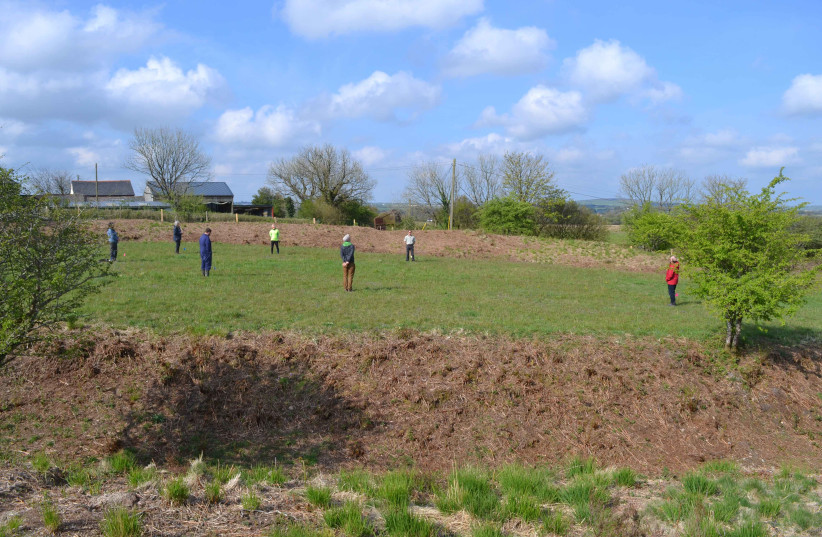Researchers near Bodim, Cornwall, UK have found a previously unknown ancient stone circle during the first modern archaeological survey of the site.
The site in question is known as Castilly Henge, thought to have been built in the late Neolithic era (3,000 BCE to 2,500 BCE), which features an external bank and internal ditch. The henge itself is a 68-meter-long, 52-meter-wide oval enclosure and is listed on the Heritage at Risk register due to it being difficult to look after as a result of its location. It was thought by prior research that the site could have been used as a sort of theater during the Middle Ages and later saw use as a gun battery during the English Civil War.
But according to this new discovery, which will be detailed in a Historic England report that will be published later this year, what was found were traces of a long-buried stone circler at the henge's center. This would make it the second henge in all of Cornwall to have a stone circle in it.
Stone circles are an ancient construct that can be seen throughout northwestern Europe, specifically in Britain, Ireland and in Brittany. While they are an iconic feature of the era, historians have long debated the purpose these stone circles served, and there has yet to be a proper consensus on this matter.
But they were at the very least somewhat important, and as such, their presence in Castilly Henge implies the site may have greater importance than once thought.

“The research at Castilly Henge has given us a deeper understanding of the complexity of this site and its importance to Cornish history over thousands of years. It will help us make decisions about the way the monument is managed and presented so that it can be enjoyed by generations to come,” Historic England Heritage at Risk project officer Ann Preston-Jones said in a statement.
The discovery was made by the Cornwall Archaeology Unit (CAU), which had gathered volunteers to clear the site of vegetation growth, and by Historic England, who conducted detailed topographic and geophysical surveys. The efforts to clear vegetation helped make the landscape visible and allowed the area to be fenced, which can allow farmers to use it for grazing — something CAU notes as a good thing.
“The help of the local volunteers has been invaluable in removing the bracken and scrub obscuring the henge. Over the winter, thirteen people gave 111 hours of their time and now the monument is looking so much better," CAU senior archaeologist Peter Dudley explained.
"The project has also re-fenced the field and the farmer is happy to start grazing again, improving the long-term management of this amazing archaeological site.”
